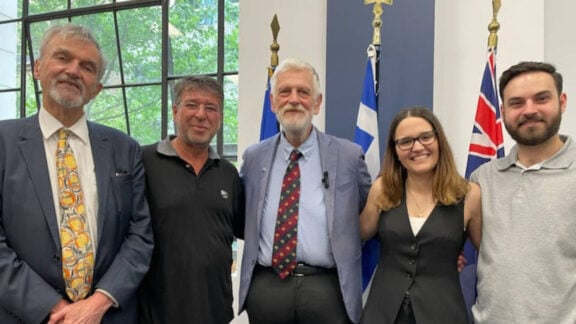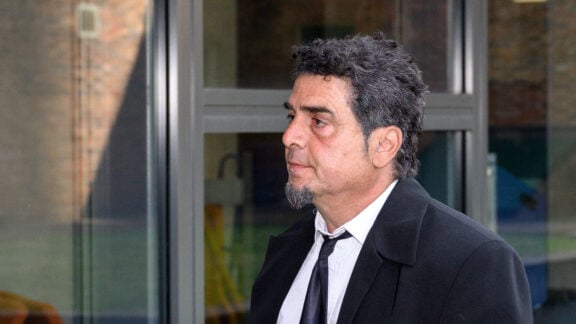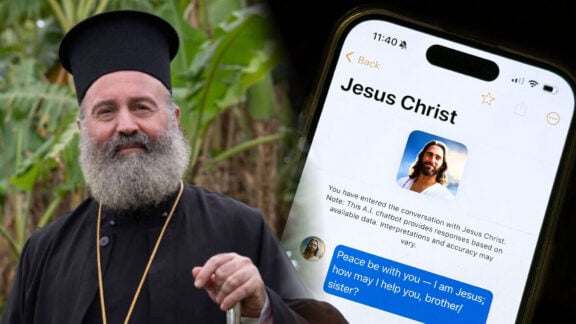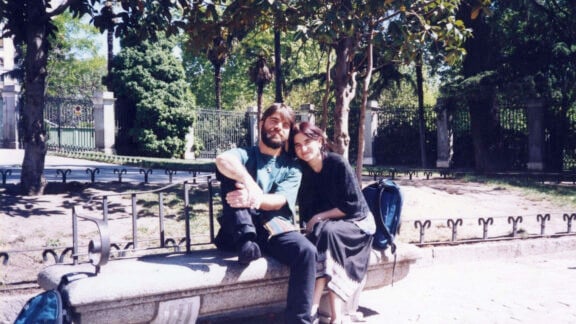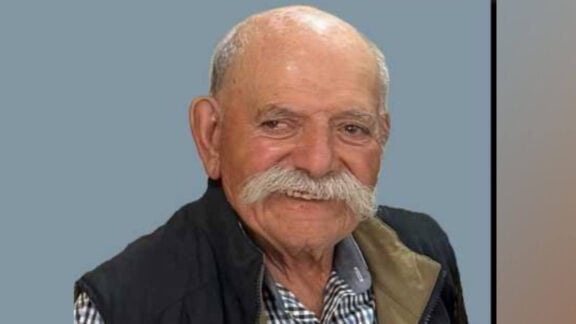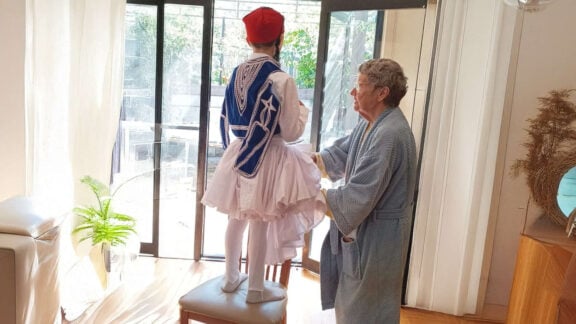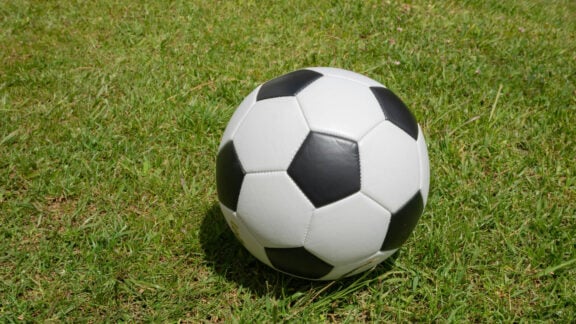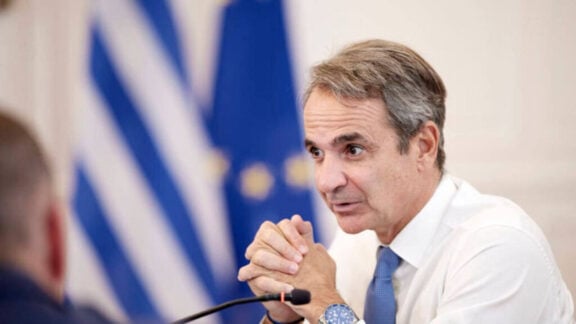Easter Sunday, the day of ‘Pascha’ in Greek, is one of the most significant religious holidays for Hellenes. Celebrations throughout Greece are steeped in tradition and are a beautiful representation of each area’s culture and customs.
The actual festivities begin on Holy Saturday, the day before Easter Sunday.
It is honoured with great zeal and devotion by the Greek Orthodox Church and is a time of deep reflection for the faithful. One could say that from a religious perspective the week towards Easter Sunday and the Resurrection is a preparation for the ‘real’ new year, a new spiritual beginning. At midnight, the Resurrection of Christ is celebrated, and church bells ring out to announce the joyous occasion while people attend the church dressed in their best clothes, carrying candles that symbolise the light of Christ, and the passage into a new era, that of hope and salvation; an opportunity to start anew.
The priests sing hymns as the Holy Light is passed to the people who chant “Christos Anesti” or “Christ is Risen”.
After the Resurrection service, families return home to break their Lenten fast. They traditionally break their fast by eating “magiritsa,” a soup made of lamb offal, herbs, and lemon juice. It is believed that eating magiritsa will give strength to the body after forty days of fasting.

On Easter Sunday, the celebrations continue with a day long family feast. The traditional meal consists of roasted lamb, potatoes, and various other dishes, including “kokoretsi” and “souvlaki.” Kokoretsi is a lamb offal dish, while souvlaki is a skewered meat dish. The feast is accompanied by red-dyed eggs, which are cracked during the meal as a symbol of Christ’s resurrection. The red dye on the eggs represents the blood of Christ and is a symbol of renewal.
NORTHERN GREECE
The Easter celebrations in Greece are not limited to the church and the dinner table. It is also customary for people to engage in outdoor activities such as fireworks displays, games, and dances.
In some areas of the country, people also engage in a tradition called “Anastenaria,” which involves dancing over hot coals to ward off evil spirits.
The Anastenaria is celebrated by the Anastenarides. They descend from refugees who fled to Greece from the village of Kōsti in eastern Trace, nowadays Bulgaria, after the Balkan Wars, and had settled in several villages in Greek Macedonia by 1924. The Anastenaria is dedicated to the deceased saints, Kōnstantinos and his mother, Elenē, who are depicted on holy icons that the Anastenarides brought with them from Kōsti. The main ritual during the Anastenaria is the ecstatic dance over red-hot coals by the Anastenarides who are possessed by their saint. The festival presents a ritual, which in many ways is in opposition to the official Orthodox religion, and it has been persecuted by the Church. Therefore, it was performed in secret for many years in thelast century. Officially, the uneasy situation between the Church and the Anastenarides has come to an end. But, still the Church states that the festival presents a combination of paganism and Christianity, and does not subscribe to the holistic view of the Anastenarides. This account is based on fieldwork carried out in two of the villages populated by Anastenarides and other (“indigenous”) Greeks during annual festivals. The paper informing this section explores how the religious spaces surrounding the rituals carried out by the Anastenarides in the villages are copies of the original cultic space in Kōsti. Furthermore, their cultic apparatuses belong to “former days”, thus constituting an ancestor-cult located to their place of origin, since the “Thracians”/”Kōstilidians”, celebrates their “Kōstilidian” community and identity through their religious rituals.
CENTRAL GREECE
Roumeli is the most famous region to visit during Easter with the focus on Livadia and Tripoli, while every region with a strong livestock element celebrates Easter in a special way. The relevant tradition comes from the Jewish Passover or “Pesach”, where believers sacrificed a lamb and then ate it. Roasting or skewering the lamb is a widespread custom throughout the Balkan Christian world.
In Leonidio, Arcadia, on the evening of the Resurrection, the sky is filled with bright “balloons”, which are lifted up by the faithful of each parish, while in Chios, rocket warfare is a custom that has its roots in the Turkish occupation and in recent years has attracted the interest of the major international media.
In Kalamata and the neighbouring Messini, on the afternoon of Easter Day, the custom of ‘saitopolemos’ (rocket war), which originates from the liberation struggles of 1821, is revived. The competing ‘bouloukia’ (mobs/gangs), dressed in traditional costumes and armed with cardboard tubes filled with gunpowder, engage in the ‘saitopolemos’. The team that stands out is awarded a prize.
In Tyros, Arcadia, on the night of the Resurrection, children throw thousands of candles into the sea, symbolising the lost souls of the Tsakonian sailors and fishermen. On Easter Sunday, a Tsakonian feast is organised in the central square, with lambs, wine and dancing, and the Gospel is read in the Tsakonian dialect.

ISLANDS
In Corfu, the Resurrection Service is performed at the Palacio of the Upper Square. The procession comes from the neighbouring church of Agia Paraskevi, with the participation of the Metropolitan, the authorities, the Philharmonic Orchestra and thousands of people. A spectacular and unique sight, perhaps the most majestic and intense Pascha celebration in all of Greece, it sees all the windows and balconies of the surrounding six-storey houses open with candles lit, as the square itself gets illuminated by the thousands of candles of the faithful, who attend the ceremony of the Resurrection in the largest square of the country with drumbeats, fireworks and more fireworks! The bands, once the Resurrection ceremony is over, go around the city playing merry marches and the people run after them singing. The feast has just begun and will last until the morning, with ‘tzilichurda’ (local delicacy), red eggs, ‘fogachas’, ‘colombines’ (Venetian dove-shaped christening cake) and lots of wine. From 7am every church makes a Resurrection procession, leading its Epitafio through the main streets of the city, with Philharmonic bands, schools, scouts and choirs.
In Corfu, in contrast to the rest of Greece, the lamb spit of the ‘Lambri’ (another name for Easter Sunday that means ‘Lit’ day) has appeared in recent years and is not part of its tradition. The Corfiots at noon eat a hearty ‘avgolemono’ soup with 2-3 types of meats and leave the ‘obelias’ (sacred lamb on the spit) for the second day of Easter. This is done to acclimatise the gut from the long fast and a soup helps it to recover and reintroduce meat softly.
In Naxos, the Easter table is dominated by the traditional ‘batoudo’, that is goat stuffed with offal, vegetables, rice, eggs and cheese baked in the oven.
In Kos, while the adults are busy with festive chores and church services, the children are preparing for the Resurrection. They take large keys of the kind that the old locks used to have, tie a rope around the key with gunpowder and put the nail in the hole of the key, on the night of the Resurrection they bang it hard against the wall so that it will go off. Others cut long strips of paper, put powder and a wick at the end of each strip, wrap it triangularly so that the wick sticks out and is lit while the priest says “Christ is risen”.
In Mykonos, on the afternoon of Easter Sunday, the residents of the island burn a ‘Judas’ effigy built during the Easter week in the main square of the island.
In Kythnos island, the custom of the swing is revived. A swing is set up in the central square, on which boys and girls, dressed in traditional costumes, take turns swinging. According to the custom, whichever boy swings a girl and vice versa, is bound before God and man for marriage.
In Amorgos, on Easter Sunday afternoon, young people gather in the churchyards and participate in traditional group games.
In Andros, on the evening of the Resurrection, young people place iron pipes on the ground, fill them with gunpowder and set them off. On the day of the Resurrection they eat the traditional ‘lambriatis’, roast lamb or goat in the oven stuffed with vegetables. In Paleopolis, Korthi and other villages on Easter Sunday afternoon they play ‘tsounia’, a traditional game similar to bowling but with wooden tools, in the street. The same game is also played in Schinoussa, called ‘bilioi’.
In Sifnos, the Easter lamb is roasted in a ‘mastelo‘ (clay pot) with dill and local red wine. On the festive table you will also find homemade sour-mizithhra and melopita, a local sweet made of honey, myzithra and eggs. In the afternoon of Easter Sunday in the central square of Apollonia, the burning of Judas is organised by the Cultural Association of Sifnos. In some villages the tradition of the ‘tsounia’ game is seen again.
In Milos, on Easter Sunday, the ‘burning of Judas’ takes place, a custom that has its roots in early Christian times. On the same day, the custom of the ‘gunpowder’ takes place in the courtyards of the churches of Agios Spyridon (Triovassalos) and Agios Georgios (Pera Triovassalos).

In Santorini, after the Resurrection, everyone, with a ‘koutsouna’ which is the Easter tsoureki, and a red egg, goes to their homes to eat the ‘sgardoumia’, the island’s iteration of offal soup. On Easter Sunday, in several villages of the island, there is a popular trial of the ‘Ovraios’ (cloth effigy of a man), who is sentenced to death, hanged and burned by the inhabitants with homemade dynamite and barrels. In Emporio, residents take to the streets by banging metal objects to exorcise the evil spirits.
In Crete, Good Friday is a major event where the largest procession of the Epitaph takes place in Heraklion starting at the church of Agios Minas and Agios Titos, it goes through the streets of the city. You can expect to see many people gathered around to watch the procession and take photos.
Heraklion follows a similar tradition as Chania which is famous for its festivities, when it comes to celebrating the day of Easter. Streets are filled with people, the atmosphere is festive, and Orthodox churches are holding special services. Many people from all over Greece visit Chania to celebrate Easter with their family and friends in the Old Town, both for the warmer weather and the delicious cuisine.
People line up in streets and squares with lambs on the spit and spicy offal treats, while most homes break a little ‘stamna’ (pot filled with water) for good luck. The alleyways smell of freshly baked ‘kalitsounia’, traditional sweet Cretan cheese pies. These are eaten all year around, but the Easter ones are made with extra care.


